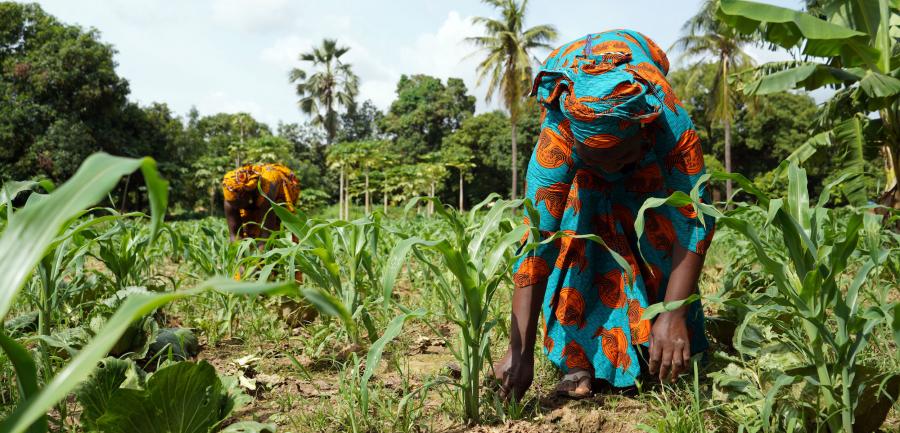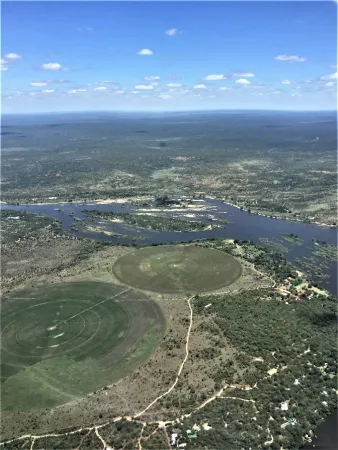
This lesson outlines a specific plan to introduce natural science students to hybrid epistemological approaches that explore socio-environmental challenges, in this case agricultural irrigation. After introducing the theories and methods of sociology, the lesson focuses on three areas inherent to environmental sociology: material, ideological, and solutions-based approaches. The material includes consumerism, technology, infrastructure, and population pressures. The ideological path approaches normative values like the economics of endless growth, the practice of consumption as a virtue, individualism versus collectivism, and how cultural beliefs and experience affect perceptions of environments. The solutions path aims to turn the study of socio-environmental problems toward reform, including material and technological evolution; recuperating cultural values of subsistence, community, and environmental care that challenge normative growth and extraction paradigms; and applying sociological insights that support environmental justice and foster greater equality across human habitats.
This is the first lesson in a three-part series. Part Two, Paradigm Shifts Applied to the Food System, uses the agricultural sector as a case study for understanding how sociological perspectives have evolved alongside changing environmental conditions and the resulting implications. Part Three, Environmental Sociology on Campus: A Field Trip, aims to get natural science students, who may conflate “environment” with “nature,” involved in empathic and perspective-building interactions with the less privileged members of their campus community.
- Identify epistemological common ground and differences between natural science research and sociological approaches and perspectives.
- Understand and apply perspectives in Sociology to specific environmental challenges.
- Inspect how Sociology can help us analyze Environmental Injustice from the micro (individual) to the macro (population) to the integrative (human/environment solutions).
- Illustrate how sociology creates actionable scenarios and narratives to reform unsustainable and unjust practices.
Consider this image of the international border between Zambia and Zimbabwe on the Zambezi river. Zambia is in the foreground. How do the biophysical conditions differ between the two countries due to infrastructure, investment, and policy? How might these environmental differences affect the life and livelihoods of residents and nature on each side of the border? Have each student speculate on 2-3 social and/or economic effects of the irrigation regime.
Introduction: Sociological Approaches to the Environment
This is an introductory assignment aimed at ecology undergraduate and beginning graduate students with little background in the social sciences. It also serves as a primer for the advanced assignments in Lesson 2 (Paradigms Shifts Applied to the Food System), and a companion assignment to Lesson 3 (Environmental Sociology on Campus). It covers the common methods that sociologists use to investigate issues from micro to macro scales, and how theories and perspectives (also called approaches) are part of the qualitative practices that distinguish sociology from the physical and natural sciences. It ends with a case study of how ecologists can use sociological methods to explore their own assumptions and biases and integrate solutions to wicked problems.
-
Start with the “Hook” above. Have students contemplate the photograph and list potential social and/or economic effects of contrasting irrigation policies and infrastructure between Zambia and Zimbabwe. For now, the ecological effects are not relevant to the conversation.
-
View Lori Peek’s overview of Sociology, focusing on:
- Her ideas of perspective and looking for patterns (2:30-7:03)
- Three theoretical perspectives: functionalist, conflict, and symbolic interactionist (16:32-22:22)
- The use of qualitative and quantitative methodologies (25:07-29:15)
- How the structure/agency debate approaches stratification and wicked problems (29:15-32:45).
Review the slides below from her talk.
DocumentPeek – Excerpt Intro. to Sociology.pptx (21.87 MB)Additional background from Peek on Symbolic Interactionism is linked below under Additional Resources.
Ask the students to free write for 3 minutes on which of the three theoretical perspectives in sociology most resonates with their sense of human cultural interactions with their environment. Have them share impressions in small groups in a 5-minute lightning session.
Invite students to share their initial impressions, and question whether these three theoretical perspectives are also temporal, that is, whether a “functionalist” perspective may be seen as “classic” (or outdated) and whether “conflict” or “symbolic interactionist” perspectives better capture the sociological puzzles of the 21st century.
Once you have a sense of your students’ sociological perspectives, take a show of hands to see where they land on the structure/agency spectrum. Are humans utterly constrained by societal structures, or are we free actors exercising our individual will? Since the answer is usually somewhere in the middle, ask for specific venues in which structure or agency more often prevail. Ask them whether all humans are equal agents, or whether some groups may enjoy more freedom and benefit more from existing social structures. How do specific forms of identity like race, gender, class, and nationality affect our self-determination?
-
Read the brief abstract and conclusion to the SESYNC study Global agricultural economic water scarcity.
DocumentThis study relies on macro, big data, quantitative analysis of biogeophysical conditions across several continents. The distinctions among different societies’ structures and their modes of inhabitation are not factored in.
Have students use Conflict and Symbolic Interactionist sociological perspectives to complicate the analysis in particular regions (i.e., how might patriarchy and social hierarchies in Sub-Saharan Africa affect access to advanced irrigation technologies and the groups it benefits?). As a sociologist, who would they survey, and what form would the surveys take (qualitative/quantitative, across social hierarchies, etc.)? What unintended consequences follow new irrigation technologies and their economic benefits?
Personalize the lesson to students. Have them identify their own area of research (hydrology, biodiversity, edge effects and fragmentation, etc.). Have them brainstorm ~3 ways that this “natural science” problem has social aspects as well. They might ask: What human groups are involved? Does a functionalist, conflict, or symbolic interactionist perspective best capture the social dynamic of this locale? Where does the dynamic fall on the spectrum from structure (determinism) to agency (individual freedom)? What material, ideological, and solutions-based factors deserve consideration? Have each student spend 5 minutes explaining to a peer their ecological research and new sociological crossings that might occur with further deliberation and design.
Then, move to a harder question—as a natural scientist, they design research that is testable, repeatable, and objective. With a sociological perspective, do they see assumptions or biases they have about the behavior of human groups or individuals within them (women, children, the wealthy)? How might a sociologist integrate human, narrative, and subjective elements into their ecology study? How would that inform the ecological methods they’ve generated already? If their study suggests certain ecological conclusions or prescriptions, how might social elements interface, complicate, or produce undesired consequences from this action?
-
Conclude this lesson by returning to the Zambia/Zimbabwe image. Who might benefit the most from Zambia’s irrigation infrastructure? Who might not? If Zimbabwe were to follow by investing in irrigation, what questions might they ask to maximize equal benefit across society?
-
Classical sociological theory—Marx, Weber, Durkheim by Tom Rudel
In this lecture, Dr. Tom Rudel overviews three classical sociological theorists—Marx, Weber, and Durkheim. He notes that all three are structuralists, but that each identifies a different force that structures economic activity and outcomes. He describes Marx’s focus on the factory as the site of consumption and production, and he notes the contemporary theories of the treadmill of production and world systems as deriving from Marx’s theories. He then summarizes the theories of Weber, who sees the rationalized state as structuring production and consumption, and he highlights ecological modernization and notions of a world society as updates of Weber’s theories. Finally, he discusses Durkheim’s ideas about occupations and the division of labor as structuring economic activity, and notes the theoretical assumption that stability and technological developments are generated by economic specialization.
Link to video lecture.
-
Dr. Lori Peek summarizes symbolic interactionism, highlighting the focus on symbols and their interpretation based on individual and social experience.
Link to video lecture.
-
Related Research: Polycentric governance and irrigation reform in Kenya by Elizabeth Baldwin, Camille Washington-Ottombre, Jampel Dell'Angelo, Daniel Cole, and Tom Evans
In Kenya, as in many developing countries, centralized control over water resources was implemented to improve agricultural productivity. By the 1980s, however, Kenya's post-independence policies of bureaucratic control were in disarray, and conflicts over water use were common. More recently, Kenya has embarked on a series of reforms that create a polycentric approach to water governance, in which multiple, overlapping local, regional, and national authorities share decision making. Drawing on archival and field research, we examine these reforms in their historic context and argue that whereas centralized control was poorly adapted to the Kenyan context, polycentric governance is better suited to Kenya's variable social and ecological conditions and the available resources of its administrative agencies.
Link to full article.
